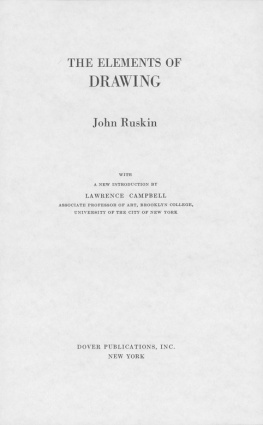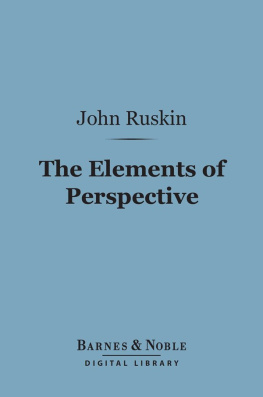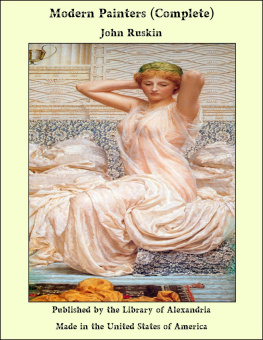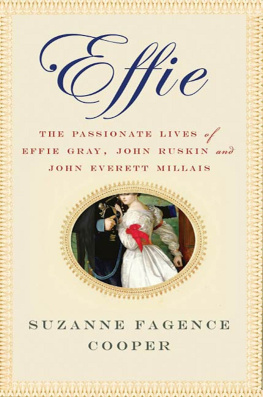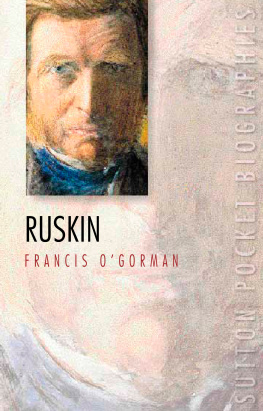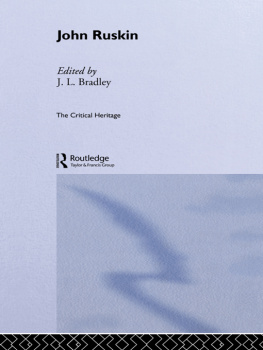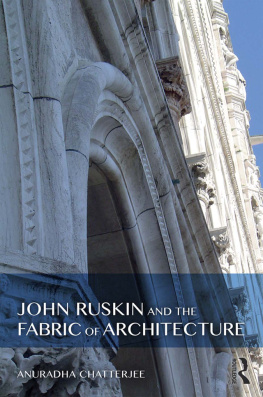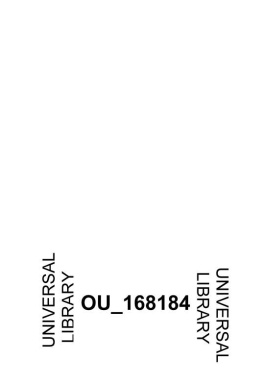I. ILLUSTRATIVE NOTES
II. THINGS TO BE STUDIED
I
ILLUSTRATIVE NOTES
NOTE 1, p. 69.PRINCIPLE OF THE STEREOSCOPE.
247. I AM sorry to find a notion current among artists, that they can, in some degree, imitate in a picture the effect of the stereoscope, by confusion of lines. There are indeed one or two artifices by which, as stated in the text, an appearance of retirement or projection may be obtained, so that they partly supply the place of the stereoscopic effect, but they do not imitate that effect. The principle of the human sight is simply this:by means of our two eyes we literally see everything from two places at once; and, by calculated combination, in the brain, of the facts of form so seen, we arrive at conclusions respecting the distance and shape of the object, which we could not otherwise have reached. But it is just as vain to hope to paint at once the two views of the object as seen from these two places, though only an inch and a half distant from each other, as it would be if they were a mile and a half distant from each other. With the right eye you see one view of a given object, relieved against one part of the distance; with the left eye you see another view of it, relieved against another part of the distance. You may paint whichever of those views you please; you cannot paint both. Hold your finger upright, between you and this page of the book, about six inches from your eyes, and three from the book; shut the right eye, and hide the words inches from, in the second line above this, with your finger; you will then see six on one side of it, and your, on the other. Now shut the left eye and open the right without moving your finger, and you will see inches, but not six. You may paint the finger with inches beyond it, or with six beyond it, but not with both. And this principle holds for any object and any distance. You might just as well try to paint St. Pauls at once from both ends of London Bridge as to realise any stereoscopic effect in a picture.
NOTE 2, p. 84. DARK LINES TURNED TO THE LIGHT.
248. It ought to have been farther observed, that the enclosure of the light by future shadow is by no means the only reason for the dark lines which great masters often thus introduce. It constantly happens that a local colour will show its own darkness most on the light side, by projecting into and against masses of light in that direction; and then the painter will indicate this future force of the mass by his dark touch. Both the monks head in are dark towards the light for this reason.
NOTE 3, p. 124. SOFTNESS OF REFLECTIONS.
249. I have not quite insisted enough on the extreme care which is necessary in giving the tender evanescence of the edges of the reflections, when the water is in the least agitated; nor on the decision with which you may reverse the object, when the water is quite calm. Most drawing of reflections is at once confused and hard; but Natures is at once intelligible and tender. Generally, at the edge of the water, you ought not to see where reality ceases and reflection begins; as the image loses itself you ought to keep all its subtle and varied veracities, with the most exquisite softening of its edge. Practise as much as you can from the reflections of ships in calm water, following out all the reversed rigging, and taking, if anything, more pains with the reflection than with the ship.
NOTE 4, p. 126. WHERE THE REFLECTION IS DARKEST, YOU WILL SEE THROUGH THE WATER BEST.
250. For this reason it often happens that if the water be shallow, and you are looking steeply down into it, the reflection of objects on the bank will consist simply of pieces of the bottom seen clearly through the water, and relieved by flashes of light, which are the reflection of the sky. Thus you may have to draw the reflected dark shape of a bush: but, inside of that shape, you must not draw the leaves of the bush, but the stones under the water; and, outside of this dark reflection, the blue or white of the sky, with no stones visible.
NOTE 5, p. 127.APPROACH STREAMS WITH REVERENCE.
251. I have hardly said anything about waves of torrents or waterfalls, as I do not consider them subjects for beginners to practise upon; but, as many of our younger artists are almost breaking their hearts over them, it may be well to state at once that it is physically impossible to draw a running torrent quite rightly, the lustre of its currents and whiteness of its foam being dependent on intensities of light which art has not at its command. This also is to be observed, that most young painters make their defeat certain by attempting to draw running water, which is a lustrous object in rapid motion, without ever trying their strength on a lustrous object standing still. Let them break a coarse green-glass bottle into a great many bits, and try to paint those, with all their undulations and edges of fracture, as they lie still on the table; if they cannot, of course they need not try the rushing crystal and foaming fracture of the stream. If they can manage the glass bottle, let them next buy a fragment or two of yellow fire-opal; it is quite a common and cheap mineral, and presents, as closely as anything can, the milky bloom and colour of a torrent wave: and if they can conquer the opal, they may at last have some chance with the stream, as far as the stream is in any wise possible. But, as I have just said, the bright parts of it are not possible, and ought, as much as may be, to be avoided in choosing subjects. A great deal more may, however, be done than any artist has done yet, in painting the gradual disappearance and lovely colouring of stones seen through clear and calm water.
Students living in towns may make great progress in rock-drawing by frequently and faithfully drawing broken edges of common roofing-slates, of their real size.
NOTE 6, p. 153. NATURES ECONOMY OF COLOUR.
252. I heard it wisely objected to this statement, the other day, by a young lady, that it was not through economy that Nature did not colour deep down in the flower bells, but because she had not light enough there to see to paint with. This may be true; but it is certainly not for want of light that, when she is laying the dark spots on a foxglove, she will not use any more purple than she has got already on the bell, but takes out the colour all round the spot, and concentrates it in the middle.
NOTE 7, p. 168.THE LAW OF REPETITION.
253. The reader may perhaps recollect a very beautiful picture of Vandycks, in the Manchester Exhibition, representing three children in court dresses of rich black and red. The law in question was amusingly illustrated, in the lower corner of that picture, by the introduction of two crows, in a similar colour of court dress, having jet black feathers and bright red beaks.
254. Since the first edition of this work was published, I have ascertained that there are two series of engravings from the Bible drawings mentioned in the list at p. 76. One of these is inferior to the other, and in many respects false to the drawings; the Jericho, for instance, in the false series, has common bushes instead of palm trees in the middle distance. The original plates may be had at almost any respectable printsellers; and ordinary impressions, whether of these or any other plates mentioned in the list at p. 75, will be quite as useful as proofs; but, in buying Liber Studiorum, it is always well to get the best impressions that can be had, and if possible impressions of the original plates, published by Turner. In case these are not to be had, the copies which are in course of publication by Mr. Lupton

